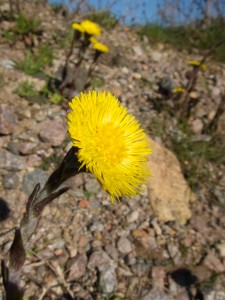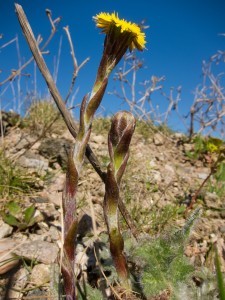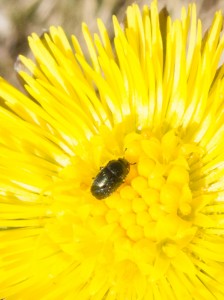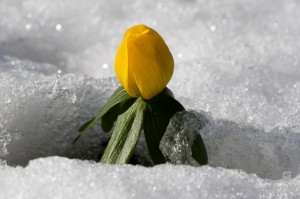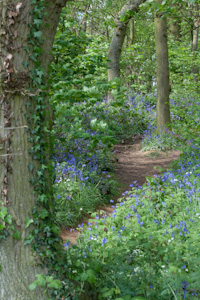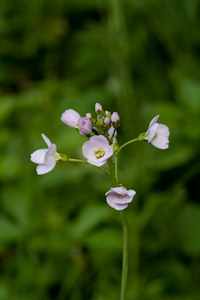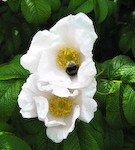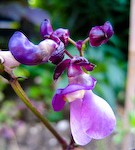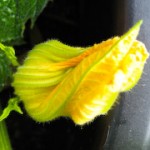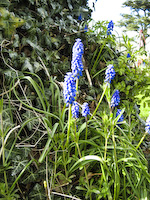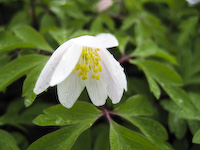If you look around for the next six months you will see a lot of flowers – but how many do you actually recognise, how many do you stop to look at in more detail.
Take Coltsfoot for example. Until today I didn’t know what it was, I had heard the name, but wouldn’t recognise it at all. It caught my eye because although it looked like a dandelion it was standing proud of the waste ground in groups.
Apart from looking beautiful with such an interesting stem coltsfoot are recognisable in spring by their lack of leaves. These appear after the flowers have died back and give the flower their name – apparently looking like a horse’s footprint, but not exactly convincing. These leaves can grow up to 1.5m tall – that’s nearly as big as me! However, the latin name Tussilago farfara is derived from its traditional medicinal as a cough medicine – tussis meaning cough and ago to act upon. It has also been used for skin treatments, gout, rheumatism, colds and viral infections. More recently though there are concerns about potential liver damage that could result from its use. This is due to the pyrrolizidine alkaloids that are found in coltsfoot along with other members of the daisy family such as ragwort. It is these chemicals that attract the caterpillar of the cinnabar moth to ragwort in such numbers as they use these poisons as a deterrent against predators. However, the levels in coltsfoot are much lower than those in ragwort.
As it appears so early in the year (they flower as early as January and last through into March) it provides an important food source for many insects including honey bees as well as this little beetle.
